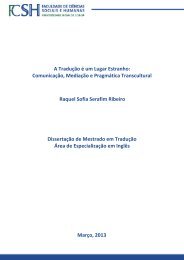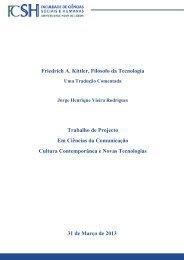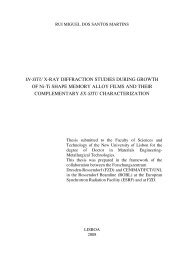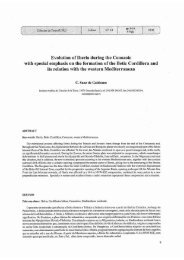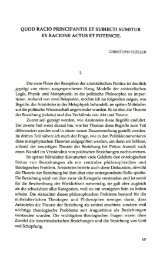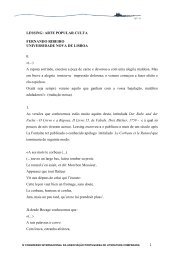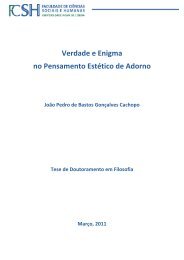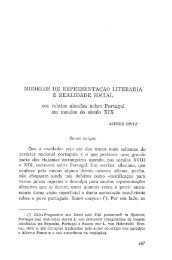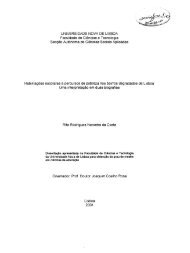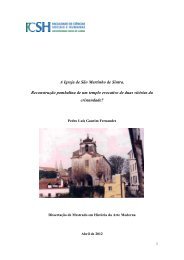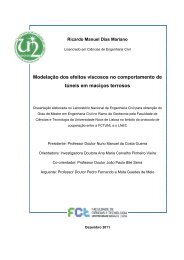Elias Manuel Morgado Pinheiro Dissertação de Mestrado em ...
Elias Manuel Morgado Pinheiro Dissertação de Mestrado em ...
Elias Manuel Morgado Pinheiro Dissertação de Mestrado em ...
You also want an ePaper? Increase the reach of your titles
YUMPU automatically turns print PDFs into web optimized ePapers that Google loves.
Chariots and draught teams are difficult and expensive to maintain. However,<br />
consi<strong>de</strong>ring that Sintashta society relied heavily in the control of critical locations and<br />
long distance tra<strong>de</strong>, it is expected that whoever controlled these two factors had the<br />
means to maintain chariot troops. It is safe to assume the existence of a military elite in<br />
Sintashta settl<strong>em</strong>ents, if for no other reason, because of its graves.<br />
However, there is clearer evi<strong>de</strong>nce of this military elite and its nature.<br />
According to V. M. Masson:<br />
―Judging by the presence of monumental cult complexes in Margiana (Gonur,<br />
Togolok) and Bactria (Dashly, Djarkutan), this ten<strong>de</strong>ncy towards a theocratic form of<br />
social organization was also preserved in the urbanized societies of south Central Asia<br />
in the 2 nd millennium BC.[...]Nevertheless, it is characteristic of that in the epoch of the<br />
Early Iron Age, when traditional urbanized centers of the Bronze Age become <strong>de</strong>stitute,<br />
monumental t<strong>em</strong>ple complexes and rich glyphic inscriptions disappeared<br />
simultaneously. Cita<strong>de</strong>ls on powerful platforms were put in the foreground as<br />
organizational centers. This can prove military and aristocratic dominance in the way<br />
of politogenesis. Furthermore, due to the armed elite which moved in chariots, the<br />
military and aristocratic way of polotogenesis [sic] was characteristic of steppe<br />
societies of the Sintashta-Arkaim period.‖ 58<br />
Masson i<strong>de</strong>ntified a direct correlation between the organizational centres of a<br />
society and its political organization. During the Late Bronze Age, urban societies of<br />
Central Asia had their organizational centres in t<strong>em</strong>ple complexes, similar to early<br />
Sumerian city-states. However, during the early Iron Age, this syst<strong>em</strong> of organization<br />
changed, with the t<strong>em</strong>ple complexes being replaced by fortified cita<strong>de</strong>ls, of close<br />
similarity with the ones found in complex steppe societies of the previous period.<br />
Consi<strong>de</strong>ring that there is a direct link between organizational centres and political<br />
organization, and that the late Central Asia Iron Age societies display the same<br />
organizational mo<strong>de</strong>l (the same centres) as the earlier Bronze Age steppe societies, it is<br />
safe to assume that these also shared a common political syst<strong>em</strong>.<br />
58 Masson, 2002, p.553<br />
36



